Search
Search Results
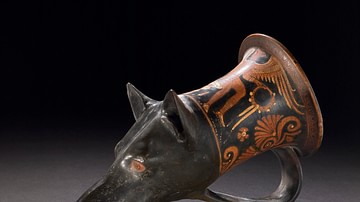
Image
Dog-Headed Rhyton
Red-figured pottery rhyton terminating in a dog's head depicting Eros seated on a rock to the right looking towards the left holding a bunch of grapes in his right hand and in his left a wreath from which hangs a taenia, in the field is flowers...
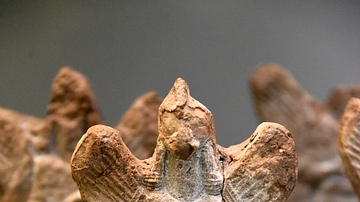
Image
Bird-headed Apkallu for Home Protection
In order to protect the household, these protective figures (apkallu or sage) would be buried beneath the floor in groups of seven. From Nimrud, Northern Mesopotamia, Iraq. Neo-Assyrian Period, 900-612 BCE. (The British Museum, London)
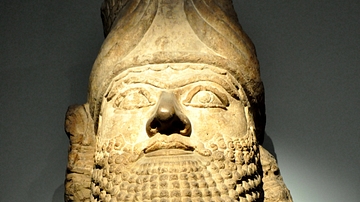
Image
Human-headed Winged-bull
This is one of the few surviving sculptures from the palace which Esarhaddon left unfinished at his death. Neo-Assyrian era, circa 670 BCE. From the south-west palace at Nimrud, Mesopotamia, Iraq. (The British Museum, London)
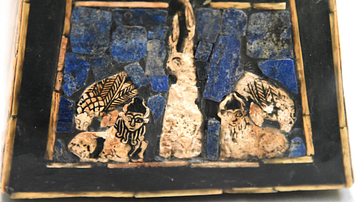
Image
Human-Headed Bull in the Standard of Ur
This is one of the scenes depicted on one of the sides of the Standard of Ur; this is not part of the so-called "Peace and War Scenes" of the Standard. Here, at the center, there is what appears to be a tall tree, although its surface is...
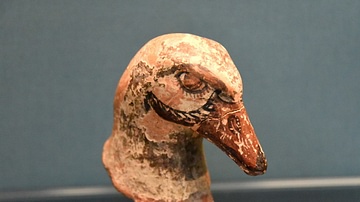
Image
Fragment of a Phrygian Goose-Headed Pottery
Only this part of a reddish painted pottery has survived. This is a goose's (or duck's) head. From Samsun, Black Sea Region, in modern-day Turkey. Phrygian, 5th to 4th century BCE. (The British Museum, London).
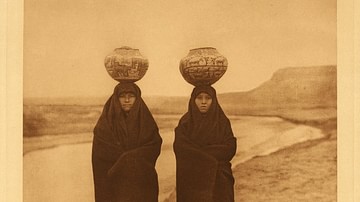
Article
Paiyatuma & the Maidens of the Corn
Paiyatuma and the Maidens of the Corn is a legend of the Zuni nation of the Pueblo peoples of the Southwest of the modern-day USA. Paiyatuma (also given as Paiyatamu) is a kachina spirit – an elemental entity – known to the Zuni as "The God...
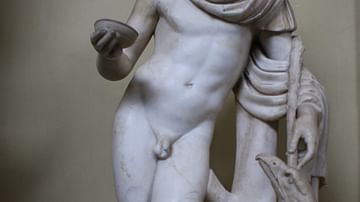
Image
Ganymede & Eagle
A marble statue of Ganymede, the Trojan prince from Greek mythology who was abducted from Mt. Ida by Zeus to become the gods' cupbearer. Found on the via Tuscolana, Rome, 2nd century CE. (Vatican Museums, Rome)
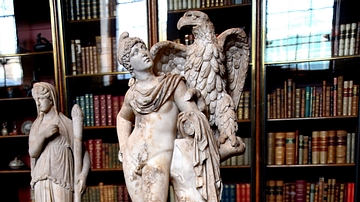
Image
Ganymede with the Eagle of Zeus
This statue came from Italy. Set on a Roman funerary altar with Latin inscription for "Ti Cl Corinthus." The altar was found near Porta Capena at Rome in 1713 CE and acquired by General Sir H. J. Montresor, circa 1750 CE. Roman, 2nd century...

Definition
Roman Standard
The Roman Standard (Latin: Signum or Signa Romanum) was a pennant, flag, or banner, suspended or attached to a staff or pole, which identified a Roman legion (infantry) or Equites (cavalry). The Standard of a cavalry unit was emblazoned with...

Video
Anubis: The Egyptian Jackal-Headed God of Mummifaction and the Afterlife
Anubis is the jackal-headed Egyptian god of mummification and the afterlife. He is depicted both as a jackal, and as a man with the head of a jackal. Anubis as a man is often depicted with black skin which represents the decay of the body...